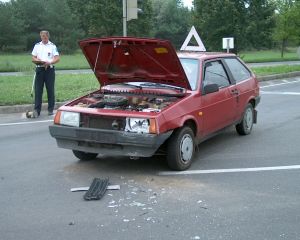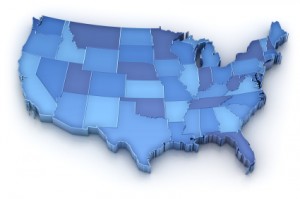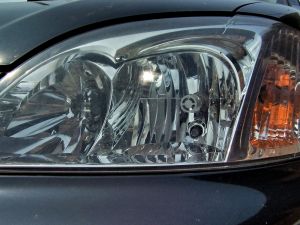Low Cost Auto Insurance Is Not a Myth
There are some common myths that, when brought up in polite conversation, always evoke debate. For instance: Is Big Foot real? Does the Loch Ness Monster like being called Nellie? Is there such a thing as low cost auto insurance? And, while it may not be an issue that Myth Busters will tackle anytime soon, the fact is that low cost auto insurance is real and readily available if you know where to look.
The first step to finding the lowest car insurance for you is to enter your ZIP code into the box below. Don’t worry–it’s FREE!
To disprove any myth, research is needed. When it comes to discovering low cost car insurance, certain factors will have to be explored. Probably the most significant being where you live.
Car insurance rates, like any other insurance, are based largely on statistical evidence. Certain regions of the country, and even neighborhoods within your city, have higher accident and theft occurrences than others. Naturally, the lower number of occurrences the better.
Location is just one factor that will affect your car insurance rate.
Like any proper myth, there is much more information to uncover before you get to the bottom line. Here’s a list of a few more items to take into consideration.
How Old You Are
They say that youth is wasted on the young. Another myth! The good news is that providers reward you more and more with each passing year. This is due largely to the fact that the likelihood of severe accidents decreases significantly as you age.
 Older drivers have more experience behind the wheel, tend to be less reckless and are less likely to drink and drive. Unfortunately, it’s no myth that teenage drivers aged 16 to 19 are four times more likely to be in an accident per mile driven then any other age group. There is a great website dedicated to reversing this trend, Car-Accidents.com.
Older drivers have more experience behind the wheel, tend to be less reckless and are less likely to drink and drive. Unfortunately, it’s no myth that teenage drivers aged 16 to 19 are four times more likely to be in an accident per mile driven then any other age group. There is a great website dedicated to reversing this trend, Car-Accidents.com.
Going the Distance
It’s a reasonable assumption that the more time you spend on the road the more likely you are to be involved in a traffic accident. Commuting is a necessary evil for many, but there are some options that you can take to lower your auto insurance costs.
The goal here is to reduce your annual mileage, so whenever possible take public transportation, car pool, ride a bike, or even walk to work.
A bad commute is not only hard on your fuel costs, it can also lead to increased stress and anxiety, which can then lead to more accidents. Here’s a list of the 75 worst commutes courtesy of the Daily Beast.
Be sure to keep your insurance provider updated if your commuting status changes. Every little bit helps.
The Right Coverage for You
One way to get the lowest cost auto insurance is to pay only for the coverage you need. Car insurance coverage falls under three main categories: comprehensive, collision, and liability.
In a nutshell, collision covers damage to your car when caused by a crash, while comprehensive covers damage caused by anything other than a collision: say hail, theft, or a flood. Liability insurance covers damage to other vehicles and personal injuries.

Each state has different legal requirements as to how much is required by law. So be sure to check with your local DMV to determine what you need to comply with state laws.
Once you have determined your legal obligations, take stock of what your car is worth. How much of your own money are you willing to spend to fix your car? If it is a high amount consider increasing your coverage.
Another way to save money is to raise your deductible. The deductible is how much of your money you will spend before the insurance company pays the bill. Let’s say you have $5,000 in damages and your deductible is $1,000. This means you would have to pay the first thousand out of pocket.
The higher the deductible, the lower the rate.
The Value of Your Vehicle
Cars are property and, when property is damaged or destroyed, the cost to replace it is determined by its value at the time of the accident. So it is natural to assume that the more expensive your car is the more your insurance will be. Statistically, certain cars are more likely to be stolen or require higher parts or repair costs, so insurance rates will be higher.
These are all things to consider when you are shopping for a new or used car. You may wish to first check with your insurer before you buy your car, as premiums will vary significantly and it may be a deciding factor in the type of vehicle you can afford.
One other thing to check is which method of assessment your insurance company will be using to determine how much money you receive in the case of an accident.
The two main types are actual cash value and replacement value. Although they are essentially the same, replacement means to replace the car with a comparable duplicate while actual cash value replaces the car less depreciation.
This is a fuzzy area, which is open to interpretation, but in most cases you receive less for your car under the actual cash value category. You can discuss these differences with your insurance agent to determine which is best for you.
If you have a classic car where the Kelly Blue Book value is low, but the collectible street value is much higher, you should consider some form of agreed value insurance, which constantly adjusts to the changing value of your car. For more information on agreed value, go to the Adjusters International website.
Drive Better; Pay Less
It’s no myth, the better you drive the less you will pay for car insurance. Accidents and tickets do factor hugely into your insurance premium.
If you are on the road a lot, sooner or later the odds are you will be involved in some kind of accident or acquire a moving violation ticket. If you do, you may be faced with a bump in your premium.
Most states use a point system to determine how good a driver you are. Not only do these points add up to higher car insurance rates, if you amass enough of them within a given time period the DMV could suspend your driving privileges or even revoke your license.
Not all state point systems are the same.
To check out the point system in your state go to the DMV.org website.
Your insurance company will check the DMV for your points when you apply. If you have a lot of points your premium will be higher. They may even refuse to cover you at all. So, think twice before you decide to roll through that stop sign or max out your speedometer on the freeway, as it could cost you (and others) in more ways than one.
If you need some additional persuasion, you might wish to glance at the U.S. census report of recent vehicle accident statistics. This website lists a comprehensive breakdown of the number and type of accidents in the U.S.
On the plus side, more and more auto insurers are giving some form of good driver discounts for customers that stay with them for several years and maintain a point free driving record. This can result in a rather nice percentage discount on your annual premium. Be sure to ask if your provider has a program such as this.
Safety and Security
One thing you may not be aware of is that where you park your car may also lower your rates. If you park in a secured garage or gated community, you can request lower rates than if you park on a busy street.
Certain neighborhoods have a higher risk of theft or vandalism. Many insurance companies will give discounts for safety items such as alarms and tracking systems. If you don’t currently have a vehicle alarm system, you may wish to add one. Be sure to check with your insurance provider to see if there are other safety options that you can acquire to lower your rates.

Besides alarms, many insurance companies will offer lower rates for built-in vehicle safety devices such as ABS brakes, daytime running lights, tire pressure monitoring systems and multiple air bags.
The Insurance Institute for Highway Safety (IIHS) performs crash tests and safety ratings on all new cars. These findings are significant to the insurance industry as the safer the car the less the damage expected in a collision.
You can see how well your car rates for safety at the IIHS web site. This site is a great place to check out when deciding on your next car, especially if vehicle safety is a primary issue to you.
Multi-Vehicle Discounts
Less is more? Another myth busted! If you live in a household with multiple vehicles, you may be able to lower your auto insurance costs by making sure they are all insured by the same carrier.
This can also apply to adding recreational vehicles such as boats, jet skis, motorcycles, motor homes, and ATVs. Depending on whom you are insured with, you may save money by combining home, auto and other insurances into one package.
In the end, the myth of whether the existence of low cost car coverage is real can be resolved by one very sound, scientific method: compare and contrast.
It’s a simple procedure. All you need to do is evaluate your current car insurance coverage and cost then compare and contrast it with other all the other comparable insurance plans out there in the universe.
 The good news is that we make it easy. You don’t need to wade through reams of dry statistics, or surf through endless pages of Internet confusion, let us do it for you. We will bust the myth of whether low cost auto insurance exists once and for all.
The good news is that we make it easy. You don’t need to wade through reams of dry statistics, or surf through endless pages of Internet confusion, let us do it for you. We will bust the myth of whether low cost auto insurance exists once and for all.
Bust some myths with FREE rates by typing your ZIP code here, NOW!

